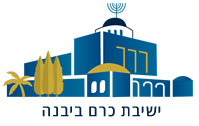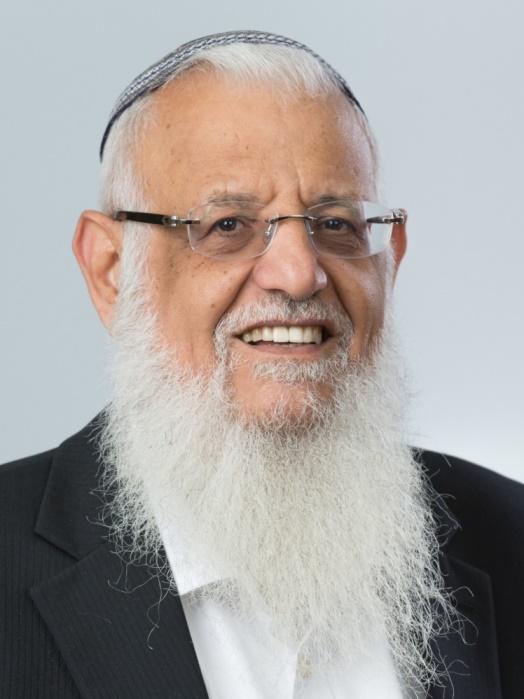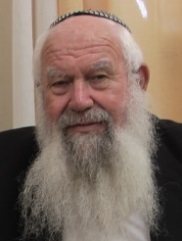פרשת מטות מסעי: קדושת הארץ
הרב משה סתיו
Rashi and the Ramban dispute the meaning of the idea that Yosef was awarded the bechora. Did he receive a double portion, or was he considered the bechor in name only? This machloket is related to another machloket regarding the meaning of the pasuk, “Lerav tarbu nachalato” (Bamidbar 26:54). According to Rashi, each shevet was assigned a portion proportionate to its size, meaning the number of its members, such that there is no significance to Yosef’s “double portion.” According to the Ramban, however, each shevet received an equal portion; the number of people was only relevant when it came to the internal division of the shevet’s territory. Among the Ramban’s questions on Rashi’s view, he notes the dispute between Yehoshua and the people of Yosef regarding the small size of their territory in proportion to their number. If each shevet was given a portion according to its size, what were the people of Yosef complaining about?
In truth, the Ramban’s question is itself difficult to understand. It appears that Yehoshua told the people of Yosef that they had been awarded a large forested area that they could conquer, and the people of Yosef did not deny that this area would in theory be enough for them; they simply doubted their ability to conquer it. How, then, can the Ramban prove his view based on this interaction? Perhaps the area was proportionate to their size, but they complained about their inability to make use of it!
The Rambam (beginning of Hilchot Terumot) explains that the territory of “Eretz Yisrael” is determined based on lands that were conquered by a kibbush rabbim. The area of Suria, in contrast, was conquered through a kibbus yachid, and therefore was not fully sanctified. The Rishonim provide a number of explanations for why Suria is considered a kibbush yachid. Rashi explains that it was not conquered by Klal Yisrael (either because there was no urim vetumim, because David HaMelech conquered it for himself, or because the nation was not large enough), and the conquest itself was thus lacking. The Rambam explains that the flaw lay in the fact that they had not completed the conquest of Canaan before they set off to conquer other areas. The Tosafot and Ramban explain that kibbush rabbim is the conquest of any area of the land delineated in Parashat Masei; conquest of any area outside of those borders is considered a kibbush yachid.
In the view of the Tosafot and Ramban, “kibbush rabbim” essentially means a justified, legal conquest, whereas “kibbush yachid” refers to an invalid conquest. In contrast to this view, Rashi maintains that the language of kibbush rabbim is meant literally, referring to conquest by and for the group. The Rambam’s view is unique in that he explains “rabbim” in the same manner as Rashi, as referring to areas conquered by the nation, but he maintains that the flaw in the conquest of Suria was that it was an invalid conquest.
Another element of this dispute relates to the very power of the conquest. According to the Rambam, the conquest was necessary not only to enable the entry of Yisrael into the land, but also because the conquest of every particular portion of the land sanctified that particular area. In contrast, according to the Tosafot and Ramban, when Yisrael began the conquest, the entire land was sanctified.
In Sefer Yehoshua, it is apparent that Hashem commanded the people to divide up the land along with the promise that He would assist them in completing the conquest, which would only be completed after Yehoshua’s death. The Rambam explains that Yehoshua was commanded to divide up even those areas that had not yet been conquered, so that when each shevet would conquer its portion, it would do so as the agents of the klal and the conquest would be considered a kibbush rabbim. The other Rishonim, in contrast, are not compelled to offer this explanation; in their view, Yehoshua was commanded to divide only the area that he had already conquered.
According to one view, Yehoshua had given the people of Yosef an area proportionate to their number, but part of that portion was an area that had not yet been conquered. Their complaint was that he had given them a portion that they could not use. According to the Ramban, however, Yehoshua did not distribute any land that had not yet been conquered. Thus, the people of Yosef could only have been complaining about the size of their portion, which supports the Ramban’s view that the distribution was not proportionate to size of the shevet.
This machloket is apparent in other contexts as well. According to the Rambam, the sanctification of any territory depends on ruling over it. What, then, would the status of the land be if it was conquered and then subsequently reconquered by the non-Jews? Would the mitzvot hateluyot ba’aretz apply in that region? It seems that that according to Rashi and the Rambam, any territory that was conquered by the nations is no longer considered “Eretz Yisrael” (although it would not need to be reconquered by Yisrael to reinstitute its kedusha, once it returns to Jewish hands). According to the Ramban, in contrast, the land remains sanctified for all purposes, even if it is conquered by others.
This helps to explain a number of difficult passages. For example, in Parshat Vayechi, Yaakov apologizes to Yosef for burying Rachel in chutz la’aretz. Ramban notes that, in fact, she was not buried in chutz la’aretz. One could argue that since the avot did not live in that area, it was not considered as though she had been buried in the land. But according to the Ramban, this explanation is not possible; the sanctification of the land as Eretz Yisrael does not depend on who lives there. (Upon fleeing to the land of the Pelishtim, David said to Shaul, “You have expelled me today from dwelling in the territory of Hashem,” even though he never left the border of the land, implying that the nature of the inhabitants is relevant.)
Perhaps this machloket also explains the Ramban’s question on the Ibn Ezra’s comment on Parshat Chayei Sarah that this story teaches the importance of a portion and burial in Eretz Yisrael. The Ramban there notes that there was no reason for Avraham to bury Sarah anywhere else. One could explain simply that we see the importance of the land from Avraham’s insistence in buying the plot. According to the Ramban, however, the territory is sanctified even if no acquisition takes place.1
1 When the Rambam explains the distinction between the boundaries of olei Bavel and those of olei Mitzrayim, he defines them based on whether only Jews lived there (olei Bavel) or Jews alongside non-Jews (olei Mitzrayim). The Rambam cites the first mishna in Gittin to define the boundaries of olei Mitzrayim. In addition to the fact that this portrayal does not reflect the reality of the time (and there are contradictions among the statements of the Rambam himself), it is unclear where he derived this from. After all, it is reasonable to assume that the boundaries of the Jewish settlement in Eretz Yisrael at the time of the mishna were more similar to the boundaries of olei Bavel. According to what we have said, however, we can answer simply that we are not discussing the historical boundaries during the time of Bayit Rishon, but rather the spread of the settlement. This fits with the Rashba cited by the Kesef Mishna regarding Beit She’an – the places that were distant from the main settlement were considered chutz la’aretz, and they are not even considered the boundaries of olei Mitzrayim.
קוד השיעור: 7671
לשליחת שאלה או הארה בנוגע לשיעור:

.jpg)
.jpg)


